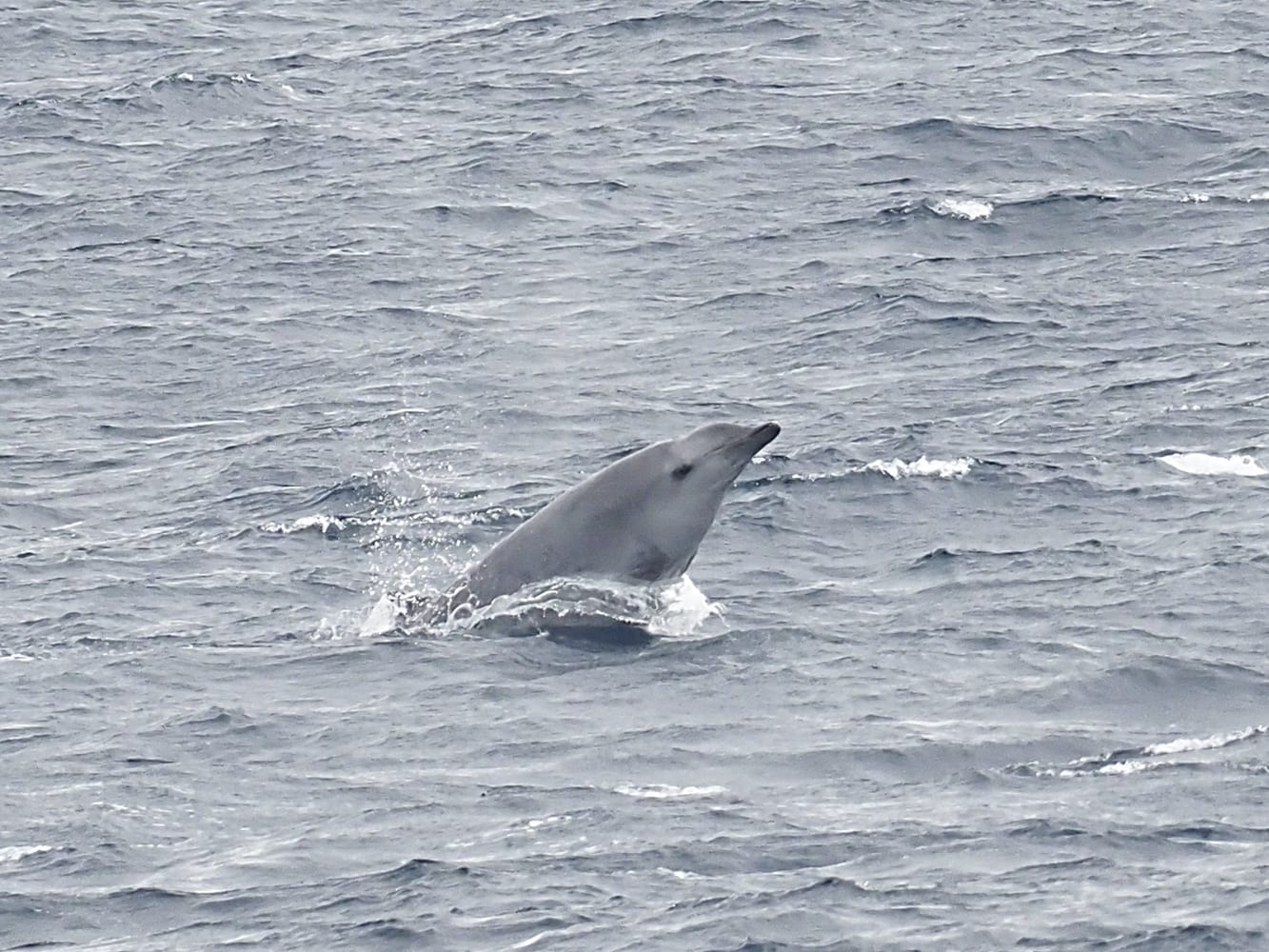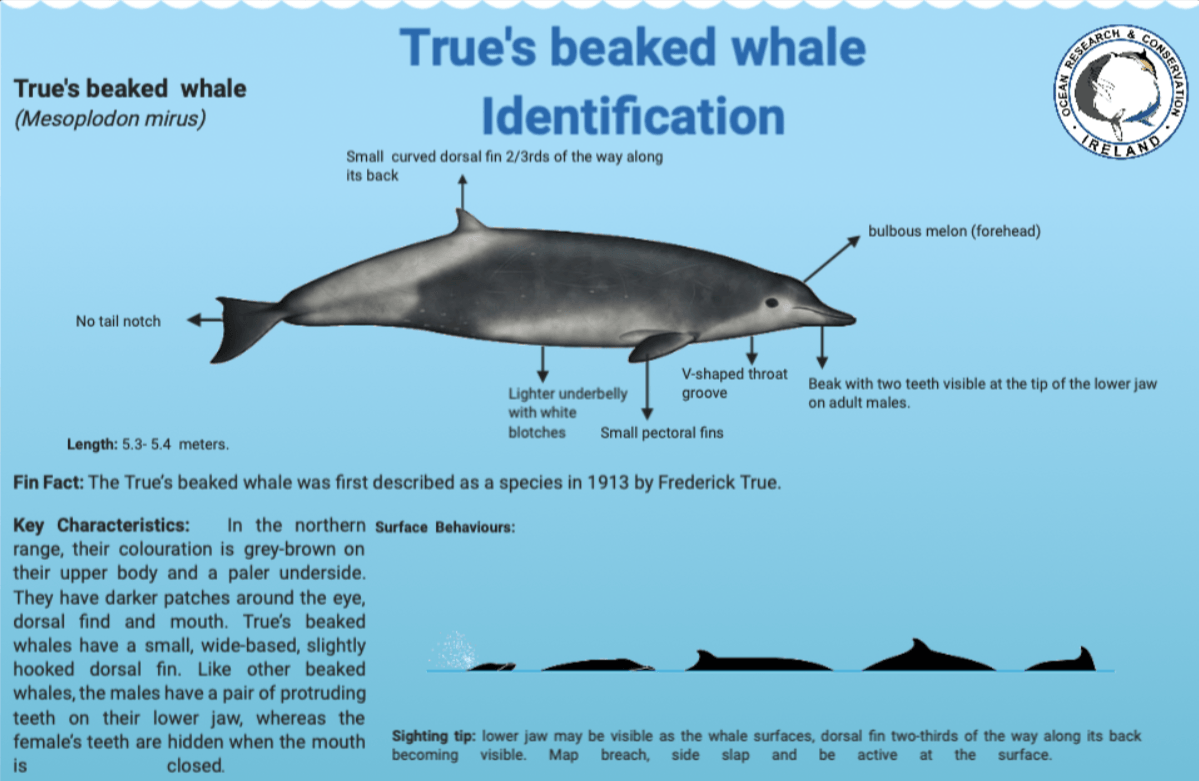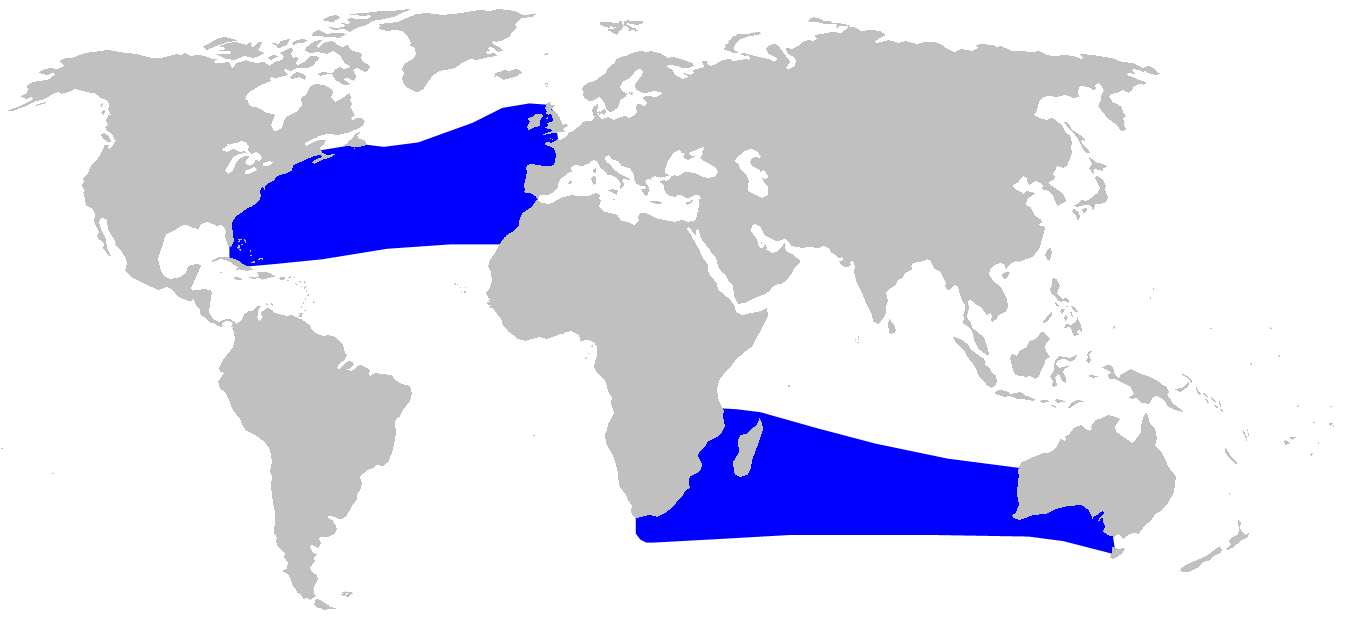True's beaked whale (Mesoplodon mirus)
Classification:
Kingdom: Animalia
Phylum: Chordata
Class: Mammalia
Order: Artiodactyla
Infraorder: Cetacea
Family: Ziphiidae
Genus: Mesoplodon
Species: M. mirus
Get the facts:
The True’s beaked whale was first described as a species in 1913 by Frederick True after a female was stranded in North Carolina in 1912. There may be two sub-species, or even two different species of this whale as they are found in two geographically distinct areas. Very little is known about this whale.
Species identification:
The colouration varies slightly between the northern hemisphere and southern hemisphere whales. In the northern range, their colouration is grey-brown on their upper body and a paler underside. In their southern range, their dorsal side is slightly lighter, with paler on the ventral side. They have darker patches around the eye, dorsal find and mouth. Some individuals in the southern range have markings on their throat. True’s beaked whales have a small, wide-based, slightly hooked dorsal fin. Females are slightly larger (5.4m) than males (5.3m) Like other beaked whales, the males have a pair of protruding teeth on their lower jaw, whereas the female’s teeth are hidden when the mouth is closed.
Diet:
Very little is known about their feeding behaviour, but like other beaked whales, it is thought that True’s beaked whales feed on squid and small fish in deeper waters.
Habitat :
True’s beaked whales appear to prefer deep, cooler temperate waters, generally above 30 degrees north and south of the equator.
Behaviour:
With few confirmed sightings, little is known about their behaviour. However, they have been seen breaching repeatedly. They are deep divers, with a cryptic and skittish behaviour. Like other beaked whales, males have scaring, suggesting they may fight to compete for a mate.
Social Structure:
True’s beaked whales have been seen both alone and in small groups of about 5 to 6 individuals.
Reproduction:
Females give birth to single calf the is around 2.2m in length and weigh about 136kg.
Vocalisations:
One study found that their peak frequencies were around 43kHz. Their clicks are similar the Gervais’ beaked whale, and the two can be difficult to distinguish.
Lifespan:
The lifespan of this species is currently unknown.
Global distribution:
There are two distinct populations, one in the Northern Atlantic, and one in the Indian Oceans and Southern Atlantic. However, it may be possible that these two populations are separate sub species or even separate species.
Population Status:
They are classified as Data Deficient on the IUCN Red List of Threatened Species, with few confirmed sightings. However, it is not thought to be rare in its northern range.
Threats to Survival:
There has been no evidence of the True’s beaked whale being hunted or a victim of bycatch. They are vulnerable to man-made noise such as naval sonar as this may disrupt their communication and ability to navigate in the ocean, particularly at deep depths. Some stranded individuals have also been found with plastic in their stomachs.






